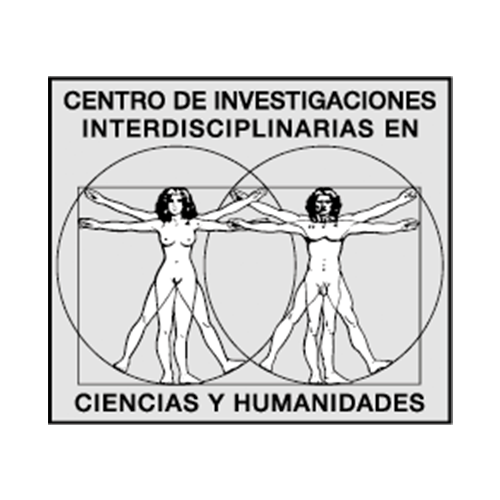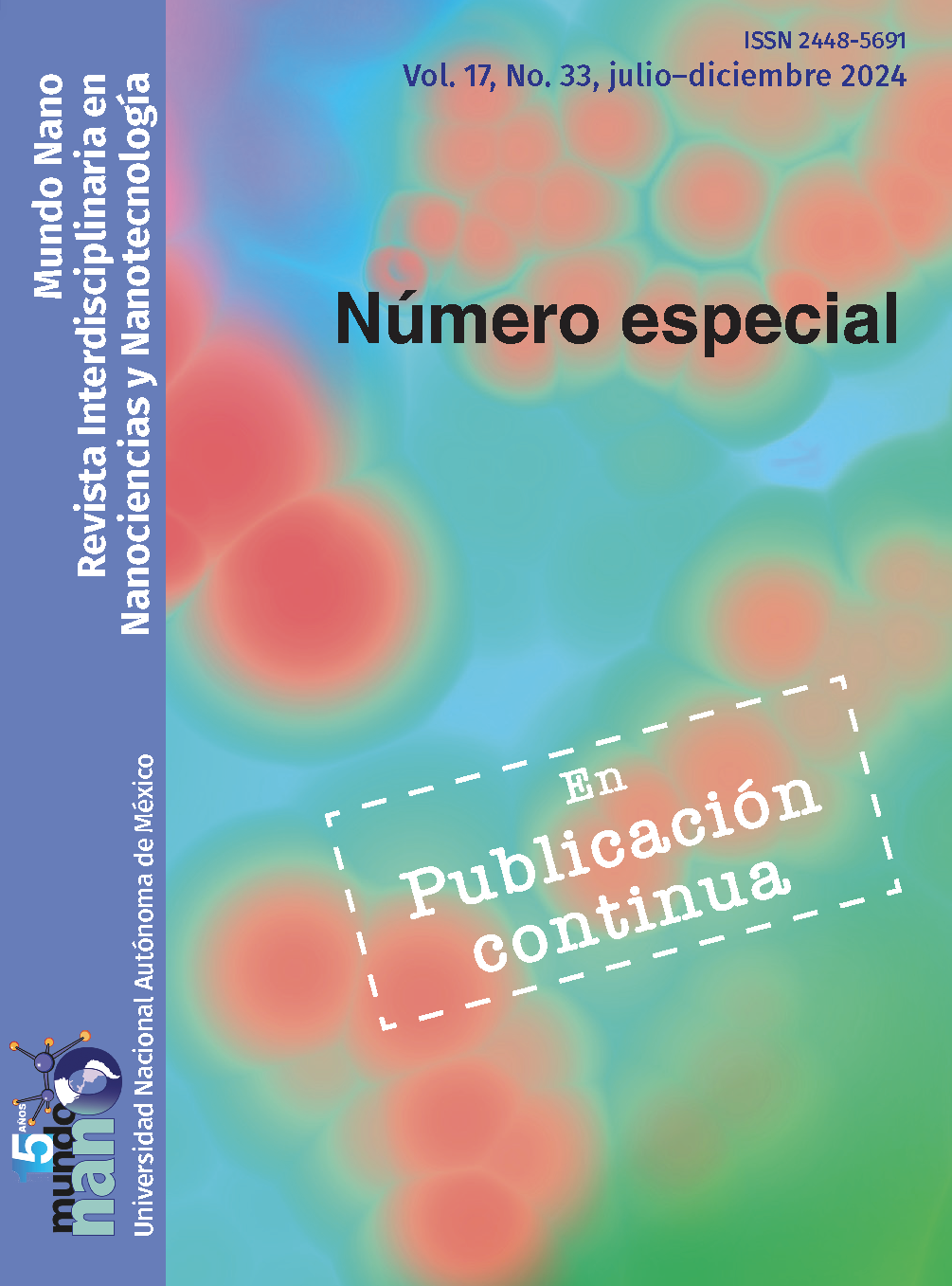El principio de precaución ante los posibles riesgos de la nanotecnología y sus derivados
Conteúdo do artigo principal
Resumo
En el presente texto se expone qué es el principio de precaución, así como la discusión en torno a porqué usarlo en el caso de la regulación y gestión de los productos de la nanotecnología. Así mismo, se exponen los resultados de la revisión de textos, principalmente académicos y oficiales, que discurren sobre el tema del principio de precaución en torno a la nanotecnología. Tras un análisis cuantitativo y cualitativo de 84 textos, se presentan los temas principales de discusión, años de publicación, relevancia de los textos para la discusión, así como las conclusiones respecto a la congruencia o no de usar el principio de precaución respecto nanotecnología.
Downloads
Detalhes do artigo

Mundo Nano. Revista Interdisciplinaria en Nanociencias y Nanotecnología, editada por la Universidad Nacional Autónoma de México, se distribuye bajo una Licencia Creative Commons Atribución-NoComercial 4.0 Internacional.
Basada en una obra en http://www.mundonano.unam.mx.
Referências
Andorno, R. y Biller-Andorno, N. (2014). The risks of nanomedicine and the precautionary principle. En B. Gordijn, A. Cutter y S. Science+Business (eds.), In pursuit of nanoethics. The International Library 131 of Ethics, Law and Technology, 131-135. https://doi.org/10.1007/978-1-4020-6817-1_9.
Andrade, L. y Amaral, F. (2013). Proposals for risk management in nanotechnology activities. En Arezes, Pedro et al. (eds.), Occupational safety and hygiene. London: Taylor & Francis Group, 573-578). ISBN 978-1-138-00047-6.
Attia, P. (2013). Mega-sized concerns from the nano-sized world: the intersection of nano- and environmental ethics. Sci Eng Ethics, 19: 1007-1016. https://doi.org/10.1007/s11948-012-9422-3.
Baindbridge, W. S. (2002). Public attitudes toward nanotechnology. Journal of Nanoparticle Research, 561-570. https://doi.org/10.1023/A:1022805516652.
Beaudrie, C., Satterfield, T., Kandlikar, M. y Harthorn, B. (2014). Scientists versus regulators: precaution, novelty & regulatory oversight as predictors of perceived risks of engineered nanomaterials. PLoS ONE, 9(9). https://doi.org/10.1371/journal.pone.0106365.
Beaudrie, C., Satterfield, T., Kandlikar, M. y Harthorn, B. (2013). Expert views on regulatory preparedness for managing the risks of nanotechnologies. PLoS ONE, 8(11): 9. https://doi.org/10.1371/journal.pone.0080250.
Bodansky, D. (2004). Deconstructing the precautionary principle. En D. Caron y H. Scheiber, Bringing new law to ocean waters. Netherlands: Koninklijke Brill N.V., 381-39.
Bosso, C. (2016). Settling into the midstream? Lessons for governance from the decade of nanotechnology. J. Nanopart Res, 18(163): 15. https://doi.org/10.1007/s11051-016-3451-9.
Bryden, D. (2008). Regulating nanotechnology: can old dogs really learn new tricks? Environmental Law Review, 10(4): 249-257. https://doi.org/10.1350/enlr.2008.10.4.028.
Burri, R. y Bellucci, S. (2008). Public perception of nanotechnology. Journal of nanoparticle research, 10: 387-391. https://doi.org/10.1007/s11051-007-9286-7.
Calliess, C. y Stockhaus, H. (2012). Precautionary principle and nanomaterials: REACH revisited. Journal for European Environmental Planning Law, 113-135. https://doi.org/10.1163/187601012X639817.
Canu, I., Schulte, P., Riedliker, M., Fatkhutdinova, L. y Bergamaschi, E. (2018). Methodological, political and legal issues in the assessment of the effects of nanotechnology on human health. J Epidemiol Community Health, 72: 148-153. https://doi.org/10.1136/jech-2016-208668.
CEC. (2000). Communication from the Commission on the precautionary principle. Commission of the European Communities, Brussels.
CEC. (2001). White paper’strategy for a future chemicals policy. Brussels, 27.2.2001 COM(2001) 88 final, 32pp.
CEC. (2008). Regulatory aspects of nanomaterials. Communication from the Commission to the European Parliament, the Council and the European Economic and Social Committee. Brussels, 17.6.2008 COM (2008) 366 final, 11pp.
Cobb, M. y Macoubrie, J. (2004). Public perceptions about nanotechnology: risks, benefits and trust. Journal of nanoperticle research, 6: 395-405.
Colussi. Ilaria Anna. (2014). The role of responsible stewardship in nanotechnology and synthetic biology. En S. Arnaldi et al. (eds.), Responsibility in nanotechnology development, cap. 4. The International 53 Library of Ethics, Law and Technology, 13, https://doi.org/10.1007/978-94-017-9103-8_4.
Dana, D. (2010). When less liability may mean more precaution: the case of nanotechnology. UCLA Journal of Environmental Law and Policy, 28(1): 153-199. https://doi.org/10.5070/L5281019950.
De Oliveira F., Mateus. (2014). Princípio da precaução e regulação do risco nanotecnológico: consequências econômicas. EALR, 5(2): 296-314, julio-diciembre.
European Communities – Community Health and Consumer Protection (EC-CHCP). (2004). Nanotechnologies: a preliminary risk analysis on the basis of a workshop organized in Brussels on 1-2 march 2004 by the health and consumer protection directorate general of the European Commission. European Communities – Community Health and Consumer Protection, Brussels.
European Commission, Directorate-General for Environment, Bradley, H., Crook, N., Reins, L. et al. (2017). Study on the precautionary principle in EU environmental policies – Final report. Publications Office, 2017, https://data.europa.eu/doi/10.2779/58953.
EC. (2009). Commission recommendation on A code of conduct for responsible nanosciences and nanotechnologies research & Council conclusions on responsible nanosciences and nanotechnologies research. Directorate-General for Research Science, Economy and Society. 24 pp.
EC. (2018). Commission general report on the operation of REACH and review of certain elements. Conclusions and Actions. Anex 5. Brussels, 5.3.2018 SWD(2018) 58 final PART 6/7, 36 pp.
EC-CHCP Community Health and Consumer Protection. (2004). Nanotechnologies: a preliminary risk analysis on the basis of a workshop organized in Brussels on 1-2 march 2004 by the health and consumer protection directorate general of the european commission. 143 pp. http://europa.eu.int/comm/health/ph_risk/events_risk_en.htm.
EEA European Environmental Agency. (2001). Harremoës Poul (editor en jefe). Late lessons from early warnings: the precautionary principle 1896-2000. Environmental issue report 22. Copenhagen, 211p. ISSN 1029-2012.
EEA. European Environmental Agency. (2013). Late lessons from early warnings: science, precaution, innovation. Report, European Environmental Agency. https://doi.org/10.2800/73322.
EFSA. (2018). Evaluation of four new studies on the potential toxicity of titanium dioxide used as a food additive (E 171). European Food Safety Authority. EFSA Journal. https://doi.org/10.2903/j.efsa.2018.5366.
EFSA. (2021). Safety assessment of titanium dioxide (E171) as a food additive. EFSA Journal. European Food and Safety Agency. https://doi.org/10.2903/j.efsa.2021.6585.
EGE, European Group on Ethics in Science and New Technologies. (2007). Opinion on the ethical aspects of nanomedicine. Opinion, 21. 123p.
Elliott, Kevin C. (2014). Ethical and societal values in nanotoxicology. En B. Gordijn y A.M. Cutter (eds.), Pursuit of nanoethics, cap. 10. The International Library 147 of Ethics, Law and Technology 10. https://doi.org/10.1007/978-1-4020-6817-1_10.
EP, European Parlament. (2009). Report on regulatory aspects of nanomaterials. Committee on the Environment, Public Health and Food Safety Rapporteur: Carl Schlyter.
EP. European Parliament. (2012). Treaty on the functioning of the European Union. Publications Office of the European Union.
Ewald, F. (2011). Situation in France the principle of precaution. En P. Houdy et al. (eds.), Nanoethics and nanotoxicology. Springer: 483-494. https://doi.org/10.1007/978-3-642-20177-624.
Fairbrother, A., Fairbrother, J. R. (2009). Are environmental regulations keeping up with innovation? A case study of the nanotechnology industry. Ecotoxicology and environmental safety, 72(5): 1327-1330. https://doi.org/10.1016/j.ecoenv.2009.04.003.
Faunce, T., Murray, K., Nasu, H., Bowman, D. (2008) Sunscreen safety: the precautionary principle. The Australian therapeutic goods administration and nanoparticles in sunscreens. Nanoethics. 2: 231-240. https://doi.org/10.1007/s11569-008-0041-z.
Gee D. (2013). More or less precaution? En European Environmental Agency (EEA), Late lessons from early warnings: science, precaution, innovation. EEA Report No 1/2013.
Groso, A., Petri-Fink, A., Magrez, A., Riediker, M., Meyer, T., (2010). Management of nanomaterials safety in research environment. Particle and Fibre Toxicology, 7(40): 1-8. https://doi.org/10.1186/1743-8977-7-40.
Groso, A., Petri-Fink, A., Rothen-Rutishauser, B., Hofmann, H., Meyer, T. (2016). Engineered nanomaterials: toward effective safety management in research laboratories. J Nanobiotechnology, 14: 21. https://doi.org/10.1186/s12951-016-0169-x.
Grunwald, A. (2008). Nanoparticles: risk management and the precautionary principle. En Jotterand, F., (ed.), Emerging conceptual, ethical and policy issues in bionanotechnology. Springer Science, 85-102.
GAIN. (2019). France bans titanium dioxide in food products by January 2020. Global Agricultural Information network.
González Martínez, J. (2018). Tratado de derecho ambiental mexicano. Vol. I. Las instituciones fundamentales del Derecho Ambiental. México: UAM.
Hansen, S., Maynard, A., Baun, A., Tickner, J. (2008). Late lessons from early warnings for nanotechnology. Nature nanotechnology, 3: 444-447, agosto. https://doi.org/10.1038/nnano.2008.198.
Hansen, S., Maynard, A., Baun, A., Tickner, J. y Bowman, D. (2013). Nanotechnology – Early lessons from early warnings. En European Environmental Agency (ed.), Late lessons from early warnings: science, precaution, innovation. 530-559. https://doi.org/10.2800/73322.
Hansen, S., Nielse K. N., Knudsen N., Grieger K. D., Baun, A. (2013). Operationalization and application of “early warning signs” to screen nanomaterials for harmful properties. Environ. Sci.: Processes Impacts, 15: 190-203. https://doi.org/10.1039/c2em30571b.
Helland, A., Kastenholz, H., Siegrist, M. (2008) Precaution in practice: perceptions, procedures and performance in the nanotech industry. Journal of industrial ecolog, 12 (3): 449-458. https://doi.org/10.1111/j.1530-9290.2008.00053.x.
Hendrikx, B., Van Broekhuizen, P. (2013). Nano reference values in the Netherlands. Gefahrstoffe reinhaltung der luft, 73(10): 407-414.
HM Government. (2005). Response to the Royal Society and Royal Academy of Engineering report: ‘Nanoscience and nanotechnologies: opportunities and uncertainties’.
Heselhaus, S. (2010). Nanomaterials and the precautionary principle in the EU. J Consum Policy, 33: 91-108. https://doi.org/10.1007/s10603-009-9123-8.
Hester, K., Mullins, M., Murphy, F. y Tofail , S. (2015). Anticipatory ethics and governance (AEG): Towards a future care orientation around nanotechnology. Nanoethics, 9: 123-136. https://doi.org/10.1007/s11569-015-0229-y.
Honkela, N., Toikka, A., Hukkinen, J., Honkela, T., (2014). Coming to grips with scientific ignorance in the governance of endocrine disrupting chemicals and nanoparticles. Environmental Science & Policy, 38: 154-163. https://doi.org/10.1016/j.envsci.2013.11.006.
Howard, V., Ikah, D. S. K. (2006). Nanotechnology and nanoparticle toxicity: a case for precaution. En Hunt, G. y Mehta M. (ed.), Nanotechnology risk ethics and law. Routledge, 154-166.
Hristozov, D., Gottardo, S., Semenzin, E., Oomen, A., Bos, P., Peijnenburg, W., Van Tongeren, M., Nowack, B., Hunt, N., Brunelli, A., Scott-Fordsmand, J. J., Tran, L., Marcomini, A., (2016). Frameworks and tools for risk assessment of manufactured nanomaterials. Environment international, 95: 36-53. https://doi.org/10.1016/j.envint.2016.07.016.
Iavicoli, I., Leso, V., Ricciardi, W., Hodson, L. L., Hoover, M. D. (2014). Opportunities and challenges of nanotechnology in the green economy. Environmental health, 13. https://doi.org/10.1186/1476-069X-13-78.
IFCS Intergovernmental Forum on Chemical Safety. (2008). Forum VI sixth session of the Intergovernmental Forum on Chemical Safety.
Invernizzi, N., Foladori, G. (2013). Unions and NGOs positions on the risks and regulation of nanotechnology. Visa em debate sociedade ceincia tecnologia, 72-84.
IÖW; Haum, Rüdiger, Petschow, Ulrich, Steinfeldt, Michael. (2004). Nanotechnology and regulation within the framework of the precautionary principle. Berlín: Institut für ökologische Wirtschaftsforschung (IÖW) gGmbH.
Jonas, H. (1995). El principio de responsabilidad. Ensayo de una ética para la civilización tecnológica. Barcelona: Herder.
Kahan, D., Braman, D., Slovic, P., Gastil, J. y Cohen, J. (2009). Cultural cognition of the risks and benefits of nanotechnology. Nature Nanotechnology, 4(2): 87-91. https://doi.org/10.1038/nnano.2008.341.
Kanarek, M. (2007). Nanomaterial health effects. Part 3: Conclusion – Hazardous Issues and the Precautionary Principle. Wisconsin Medical Journal, 106 (1): 16-19.
Kermisch, C. (2012). Do new ethical issues arise at each stage of nanotechnological development? Nanoethics, 6 (1): 29-37. https://doi.org/10.1007/s11569-011-0137-8.
Klaine, J., Koelmans, A., Horne, N., Carley, S., Handy, R. y Kapustka, L. et al. (2012). Paradigms to assess the environmental impact of manufactured nanomaterials. Environmental Toxicology and Chemistry, 31(1): 3-14. https://doi.org/10.1002/etc.733.
Klika, C. (2015). Risk and the precautionary principle in the implementation of REACH. The inclusion of substances of very high concern in the candidate list. EJRR, 1: 111-120. https://doi.org/10.1017/S1867299X00004335.
Kuraj, N. (2017). Reaching an environmental regulation for nanotechnology. An analysis of REACH as an instrument for preventing and reducing the environmental impacts of nanomaterials. Tesis doctoral. Facultad de Leyes, University of Oslo, Noruega.
Larsson, S., Jansson, M. y Boholm, A. (2019). Expert stakeholders’ perception of nanotechnology: risk, benefit, knowledge, and regulation. Journal of Nanoparticle Research, 21(57). https://doi.org/10.1007/s11051-019-4498-1.
Lasagabaster, H. I., Arizkun, C. A. (2011). The precautionary principle: regulation needed to confront the risks associated with nanotechnology. En The precautionary principle, 45-56.
Lee, M. (2010). Risk and beyond: EU regulation of nanotechnology. European law review, 35(6): 799-821. ISSN: 0307-5400.
Lin, A .C. (2007). Size matters: regulating nanotechnology. Harvard environmental law review, 31(2): 349-408.
Malsch, I., Nielsen, K. H. (2009). Individual and collective responsibility for nanotechnology. http://www.observatorynano.eu/project/catalogue/4RC/.
Marchant, G., Sylvestre, D. J, (2006). Transnational models for regulation of nanotechnology. Journal of Law, Medicine & Ethics, 34(4): 714-25, invierno. https://doi.org/10.1111/j.1748-720X.2006.00091.x.
Marchant, G., Sylvestre, D. J. y Abbott, K. (2008). Risk management principles for nanotechnology. Nanoethics, 2: 43-60. https://doi.org/10.1007/s11569-008-0028-9.
Marchant, G. E., Lindor, R. A.(2012). Prudent precaution in clinical trials of nanomedicines. Journal of Law, Medicine & Ethics, 40(4): 831-840. https://doi.org/10.1111/j.1748-720X.2012.00711.x.
Mbengue Makane M. y Charles, Margaux. (2013). International organizations and nanotechnologies: the challenge of coordination. RECIEL, 22(2). ISSN 0962-8797.
Mielke, Sebastian K. (2013). Regulating in thin air: nanotechnology regulation in the European Union. RECIEL, 22(2). ISSN 0962-8797.
Milieu. (2011). Review of Environmental Legislation for the Regulatory Control of Nanomaterials. Milieu, AMEC. 244 pp.
Montage, P. (2004). Welcome to NanoWorld: nanotechnology and the precautionary principle imperative. Multinational Monitor, 16-19,septiembre.
Myhr, A. I. y Myskja, B. K. (2011). Precaution or integrated responsibility approach to nanovaccines in fish farming? A critical appraisal of the UNESCO precautionary principle. Nanoethics, 5: 73-86. https://doi.org/10.1007/s11569-011-0112-4.
O’Mathuna, D. P. (2011). Taking a precautionary approach to nanotechnology. Nanotechnology Development. 1:e6, 26-30. https://doi.org/104061/nd.2011.e6.
ONU, Organización de las Naciones Unidas. (1992). Conferencia de Naciones Unidas sobre medio ambiente y desarrollo. Declaración de Río sobre el medio ambiente y el desarrollo.
Parizeau, M. H. (2012). Towards an ethic of technology? nanotechnology and the convergence of applied ethics. Journal of Philosophical Research, 293-302. https://doi.org/10.5840/jpr201237Supplement47.
PE, Parlamento Europeo. (2008). Informe sobre los aspectos reglamentarios de los nanomateriales. Parlamento Europeo, Comisión de Medio Ambiente, Salud Pública y Seguridad Alimentaria.
Phoenix, Ch., Treder, M. (2004). Applying the precautionary principle to nanotechnology. 3 pp. http://www.crnano.org/precautionary.htm.
Pellin, D. Engelman, W. (2017). The principle of precaution in nanotechnological risk scenario. Cadernos de Dereito Actual., 6: 9-29. ISSN 2340-860X - ISSNe 2386-5229.
Perez, O. (2010). Precautionary governance and the limits of scientific knowledge – A democratic framework for regulating nanotechnology. UCLA Journal of Environmental Law and Policy, 28(1): 20-76. https://doi.org/10.5070/L5281019947.
RCEP, Royal Commission on Environmental Pollution. (2008). Novel materials in the environment: the case of nanotechnology, 27 report. 154 pp. ISBN: 9780101746823.
Resnik, D. B. (2019). How should engineered nanomaterials be regulated for public and environmental health? AMA Journal of Ethics, 21(4): E363-369. https://doi.org/10.1001/amajethics.2019.363.
Riechmann, J. (2002). Introducción: un principio para reorientar las relaciones de la humanidad con la biosfera. En J. Riechmann y J. Tickner, El principio de precaución en medio ambiente y salud pública: de las definiciones a la practica. España: Icaria, 7-38.
Rip, A. (2006). The tension between fiction and precaution in nanotechnology. En Prospective applications of the precautionary principle, 270-283.
Roig, A. (2018). Nanotechnology governance: from risk regulation to informal platforms. Nanoethics, 12: 115-121. https://doi.org/10.1007/s11569-018-0321-1.
RS y RAE. (2004). Nanoscience and nanotechnologies: opportunities and uncertainties. Royal Society y Royal Academy of Engineering. Cardiff: Clyvedon Press. ISBN 0 85403 604 0.
Saldívar, L. (2019). Regulando lo invisible. Necesidad del principio de precaución en la política de nanotecnología en México. México: El Colegio de México.
Saldívar, L. (2019). Regulando la nanotecnología. Mundo Nano. Revista Interdisciplinaria en Nanociencias y Nanotecnología, 12(22): 1e-21e-. México: UNAM. https://doi.org/10.22201/ceiich.24485691e.2019.22.63140.
Saldivar, L. y Hansen, S. (2021). Should the precautionary principle be implemented in Europe with regard to nanomaterials? Expert interviews. Journal of Nanoperticle Research, 23(70): 14. https://doi.org/10.1007/s11051-021-05173-w.
Saldivar-T, L. (2020). Regulación blanda, normas técnicas y armonización regulatoria internacional para la nanotecnología. Mundo Nano. Revista Interdisciplinaria en Nanociencias y Nanotecnología, 13(24): 1e-27e, enero-junio. https://doi.org/10.22201/ceiich.24485691e.2020.24.69621.1
Santillo, D., Stringer, L. y Johnston, P. A. (1998). The precautionary principle: protecting against failures of scientific method and risk assessment. Marine Pollution Bulletin, 36(12): 939-951. https://doi.org/10.1016/S0025-326X(98)80003-9.
SCENIHR, European Commission. (2006). The appropriateness of existing methodologies to assess the potential risks associated with engineered and adventitious products of nanotechnologies. Opinion Directorate C – Public Health and Risk Assessment C7 – Risk assessment. Synthesis report: http://ec.europa.eu/health/ph_risk/documents/synth_report.pdf.
Smismans, S., Stokes, E. (2017). Innovation types and regulation: the regulatory framing of nanotechnology as “incremental” or “radical” innovation. European Journal of Risk Regulation. 8: 364-386 (núm. especial 2). https://doi.org/10.1017/err.2017.9.
Solaiman, S. M., Algie, J., Bakand, S., Sluyter, R., Sencadas, Lerch, M., Huang, Xu-F., Konstantinov, K., Barker, P. J. (2019). Nano-sunscreens – A double-edged sword in protecting consumers from harm: viewing Australian regulatory policies through the lenses of the European Union. Critical reviews in toxicology, 49(2): 122-139. https://doi.org/10.1080/10408444.2019.1579780.
Solaiman, S., Yamauchi, Y., Kim, J., Hovart, J., Dou, S., Alici, G., Hossain, S. et al. (2017). Nanotechnology and its medical applications: revisiting public policies from a regulatory perspective in Australia. Nanotechnology Review, 6(3): 255-269. https://doi.org/10.1515/ntrev-2016-0095.
Spruit, S. L. (2017). Choosing between precautions for nanoparticles in the workplace: complementing the precautionary principle with caring. Journal of Risk Research, 20(3): 326- 346. https://doi.org/10.1080/13669877.2015.1043574.
SRU. (2011). Precautionary strategies for managing nanomaterials. Chap. 7: Conclusions and Recommendations. June. German Advisory Council on the Environment, 1-40.
Stebbing, Ma. (2009). Avoiding the trust deficit: public engagement, values, the precautionary principle and the future of nanotechnology. Journal of bioethical inquiry, 6(1): 37-48. https://doi.org/10.1007/s11673-009-9142-9.
STOA, Science and Technology Options Assessment. 2008. Nano Safety – Risk governance of manufactured nanoparticles. Final report. European Parliament. IP/A/STOA/FWC/2008-096/LOT5/C1/SC3.
Sweet, L., Strohm, B. (2006). Nanotechnology – Life-cycle risk management. Human and Ecological Risk Assessment, 12(3): 528- 551. https://doi.org/10.1080/10807030600561691.
Swierstra, T. T., Rip, A. (2007). Nano-ethics as NEST-ethics: patterns of moral argumentation about new and emerging science and technology. Nanoethics, 1: 3-20. https://doi.org/10.1007/s11569-007-0005-8.
Swiss Re . (2004). Nanotechnology small matter, many unknows. Suiza: Swiss Reinsurance Company.
Throne-Holst, H. y Stø, E. (2008). Who should be precautionary? Governance of nanotechnology in the risk society. Technology Analysis & Strategic Management, 20(1): 99-112. https://doi.org/10.1080/09537320701726726.
Tickner, J. (1998). A commonsense framework for operationalizing the precautionary principle. Ponencia presentada en la Wingspread Conference on Strategies for Implementing the Precautionary Principle, Racine, 23 al 25 de enero.
Tickner, J., Raffensperger, C. y Myers, N. (1999). El principo de precuación en acción. Manual, Science and Environmental Health Network, SEHN.
Torres-Tavares, E., Schramm, F. R. (2015). The principle of precaution and the nano-techno-sciences. Revista Bioética, 23(2). https://doi.org/10.1590/1983-80422015232063.
Tyshenko, M. G., Farhat, N., Lewis, R., Shilnikova, N. (2010) Applying a precautionary risk management strategy for regulation of nanotechnology. International journal of nanotechnology, 7(2-3): 243-264. https://doi.org/10.1504/IJNT.2010.031313.
Tyshenko, M. G., Krewski, D. (2008). A risk management framework for the regulation of nanomaterials. International Journal of Nanotechnology, 5(1): 143-160. https://doi.org/10.1504/IJNT.2008.016553.
UNESCO. (2005). The precautionary principle. United Nations Educational, Scientific and Cultural Organization, COMEST.
Van Broekhuizen, P., y Reijnders, L. (2011). Building blocks for a precautionary approach to the use of nanomaterials: positions taken by trade unions and environmental NGOs in the European nanotechnologies debate. Risk Analysis, 31(10): 1646-1657. https://doi.org/10.1111/j.1539-6924.2011.01615.x.
Van Broekhuizen, P., Van Veelen, W., Streekstra, W.-H., Schulte, P. y Reijnders, L. (2012). Exposure limits for nanoparticles: report of an international workshop on nano reference values. Ann. Occup. Hyg, 56(5): 515-524. https://doi.org/10.1093/annhyg/mes043.
Van Broekhuizen, P. y Dorbeck-Jung, B. (2013). Exposure limit values for nanomaterials – Capacity and willingness of users to apply a precautionary approach. Journal of Occupational and Environmental Hygiene, 10(1): 46-53. https://doi.org/10.1080/15459624.2012.744253.
Von Schomberg, R. (2010). Organising collective responsibility: on precaution, codes of conduct and understanding public debate. In U. Fiedeler et al. (eds.), Understanding nanotechnology. Alemania: AKA Verlag Heidelberg, 61-70.
Warshaw, J. (2012). The trend towards implementing the precautionary principle in US regulation of nanomaterials. Dose-response, 10(3): 384-396. https://doi.org/10.2203/dose-response.10-030.Warshaw.
Weckert, J. (2010). In defence of the precautionary principle. IEEE International Symposium on Technology and Society.
WHO-Europe. (2004). The precautionary principle: protecting public health, the environment and the future of our children.
Wickson, F., Gillund, F. y Myhr, A. (2010). Treating nanoparticles with precaution: recognising qualitative uncertainty in scientific risk assessment. En P. S. Publishing (ed.), Nano meets macro: social perspectives on nanoscale sciences and technologies, 445-472.
Wickson, F. (2011). Gobernanza nanotecnológica: por qué no podemos confiar en evaluaciones de riesgo científicas. Mundo Nano. Revista Interdisciplinaria en Nanociencias y Nanotecnología, 4(1). UNAM, México. https://doi.org/10.22201/ceiich.24485691e.2011.1.50988.





